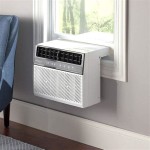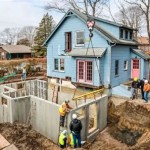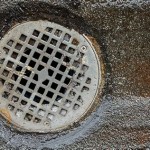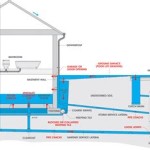Water Leaking From Ceiling In Basement: Troubleshooting and Solutions
Discovering water leaking from the ceiling in your basement can be a stressful and alarming experience. Water damage can lead to various problems, including structural damage, mold growth, and costly repairs. Understanding the causes and addressing them promptly is crucial to minimize the damage and ensure the safety and integrity of your home. This article provides comprehensive guidance on troubleshooting and resolving water leaking issues from the ceiling in your basement.
1. Identifying the Source of the Leak
The first step in addressing a water leak is to identify its source. Check for the following potential causes:
- Cracked or leaking pipes: Inspect all pipes running through the ceiling, including water supply lines, drain pipes, and sewer pipes. Look for any visible cracks, corrosion, or loose connections.
- Roof leaks: Water can seep into the basement ceiling from leaks in the roof, gutters, or downspouts. Examine the roof for missing or damaged shingles, clogged gutters, and any other areas where water may enter.
- Foundation cracks: Cracks in the foundation can allow water to penetrate the basement walls and seep into the ceiling. Inspect the foundation for any visible cracks or signs of water damage.
- Window or door leaks: Water can leak into the basement through cracks or gaps around windows and doors. Check for any missing or damaged weatherstripping or caulking.
- Condensation: In humid environments, condensation can form on the ceiling and eventually lead to water leaks. Check for areas where warm, moist air meets cold surfaces, such as near hot water pipes or appliances.
2. Temporary Measures to Stop the Leak
Once you have identified the source of the leak, it is essential to take immediate action to stop the water from flowing and prevent further damage. Temporary measures include:
- Place a bucket or container under the leak: This will catch the leaking water and prevent it from spreading.
- Turn off the water supply: If the leak is from a pipe, locate the water shut-off valve and turn it off to stop the flow of water.
- Cover the leak with a tarp or plastic sheet: This will create a temporary barrier to prevent water from dripping.
3. Permanent Solution for the Leak
After implementing temporary measures, it is crucial to find a permanent solution to prevent future leaks. The appropriate approach depends on the source of the leak.
- Pipe repair or replacement: If the leak is from a pipe, a plumber should be called to repair or replace the damaged pipe.
- Roof repair: Contact a roofing professional to identify and repair any leaks in the roof, gutters, or downspouts.
- Foundation repair: Foundation cracks should be repaired by a qualified contractor to prevent further water penetration.
- Window or door repair: Inspect windows and doors for any gaps or cracks and seal them with caulk or weatherstripping.
- Condensation control: Reduce humidity levels in the basement by installing a dehumidifier or improving ventilation.
4. Water Damage Mitigation
If the water leak has caused significant water damage, it is essential to take steps to mitigate the damage and prevent mold growth. This includes:
- Remove standing water: Use a pump or wet/dry vacuum to remove any standing water from the basement.
- Dry the area: Use fans and dehumidifiers to dry the affected area thoroughly.
- Disinfect surfaces: Use a bleach solution or commercial disinfectant to clean and disinfect any surfaces that have come into contact with water.
5. Prevention Tips
To prevent future water leaks from the ceiling in your basement, consider the following tips:
- Regular maintenance: Inspect your roof, gutters, downspouts, and foundation regularly for any signs of damage or leaks.
- Seal cracks and gaps: Seal any cracks or gaps around windows, doors, and pipes to prevent water penetration.
- Control humidity: Use a dehumidifier or improve ventilation to reduce humidity levels in the basement.
- Address plumbing issues promptly: Fix any leaks or dripping faucets as soon as they occur to prevent larger problems.
- Install a sump pump: A sump pump helps remove excess water from the basement and prevent flooding.
By understanding the causes and following the troubleshooting and solution guide outlined in this article, you can effectively address water leaks from the ceiling in your basement, minimize damage, and ensure the safety and integrity of your home.

Water Damage In Your Ceiling Isn T Always Easy To Spot Servpro

Basement Water Leaks Can Come From Above Home Repair Advice Youtube

Water Damage In Your Ceiling Isn T Always Easy To Spot Servpro

Who To Call For Water Leak In Ceiling Swc Construction

Finding The Source Of A Basement Water Problem Energy Vanguard

4 Causes Of Water Stains On Your Ceiling Ways To Respond

Water Leaking From Ceiling Apartment Swc Construction

Ceiling Water Damage Here S 5 Steps To Take Rock Emergency

Piping Leakage Causing Ceiling Repair Water Leak

Why Is My Basement Ceiling Wet Rainbow Restoration







